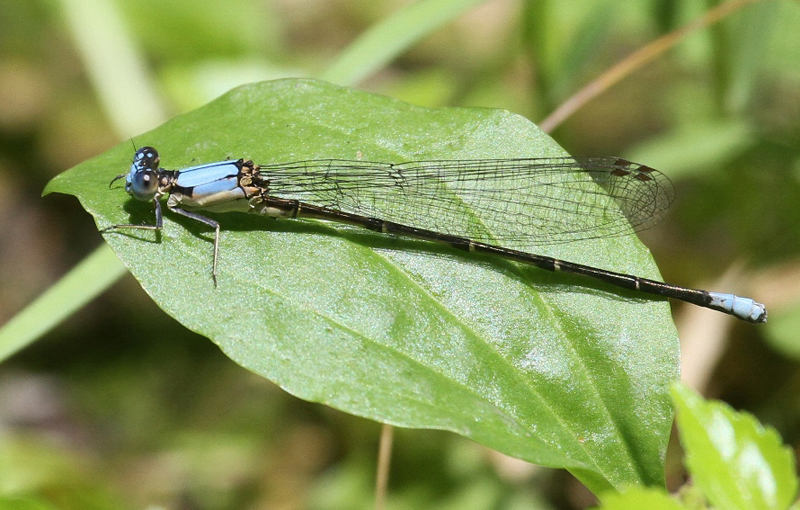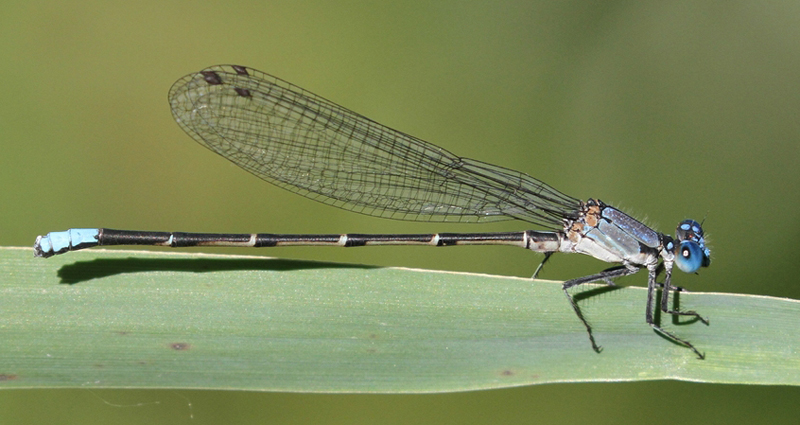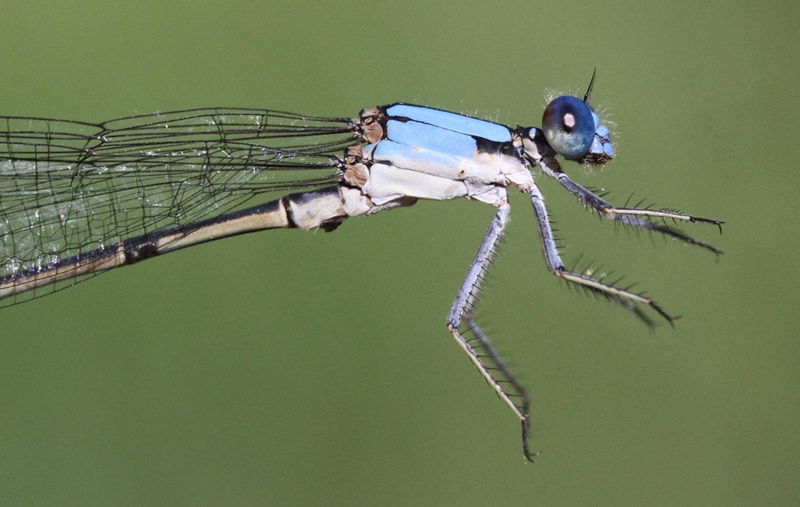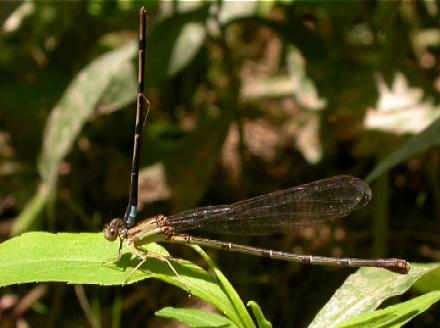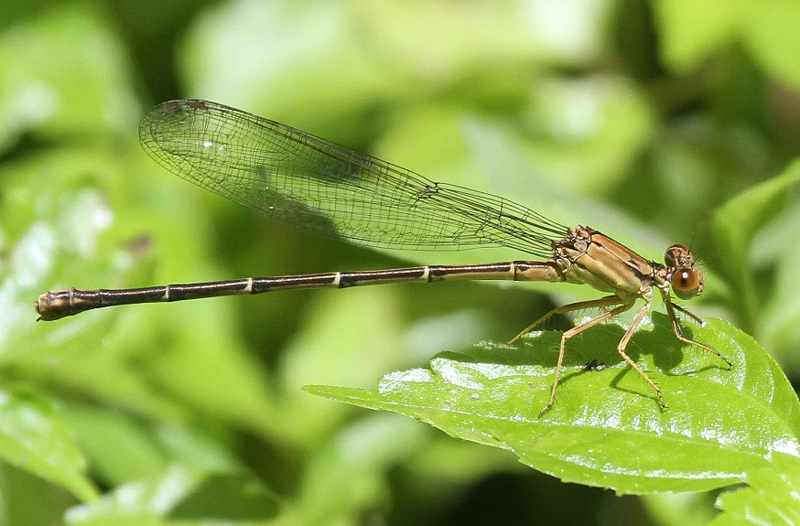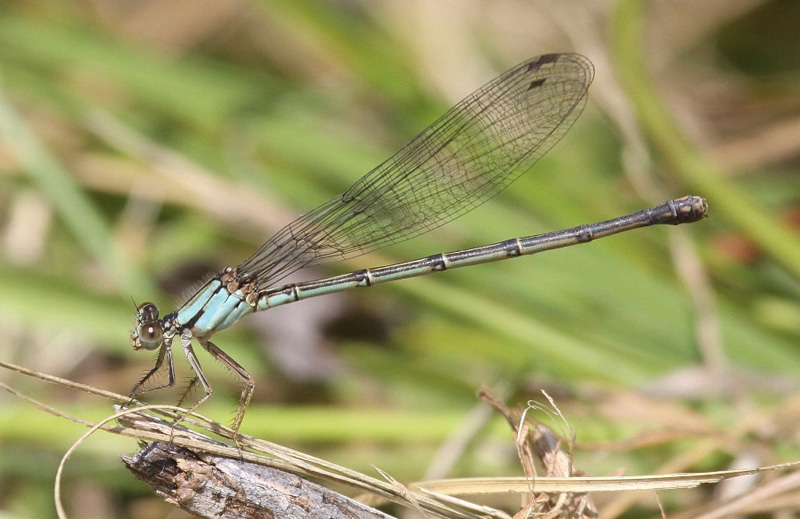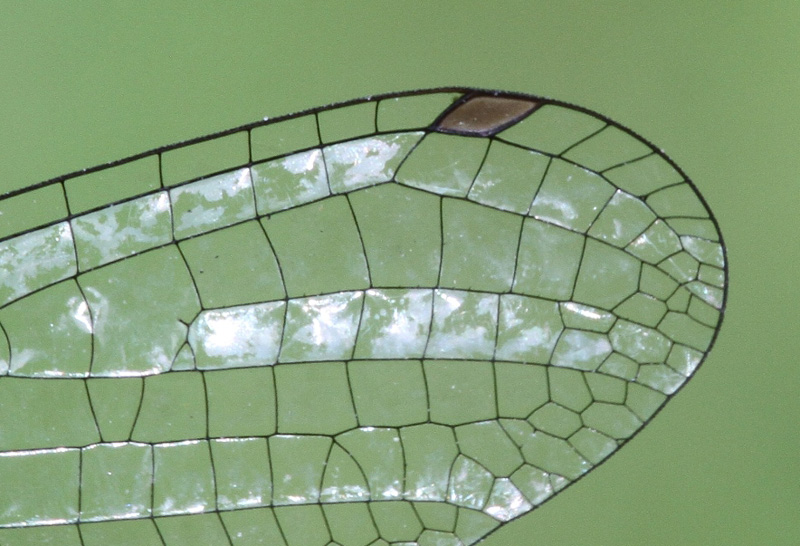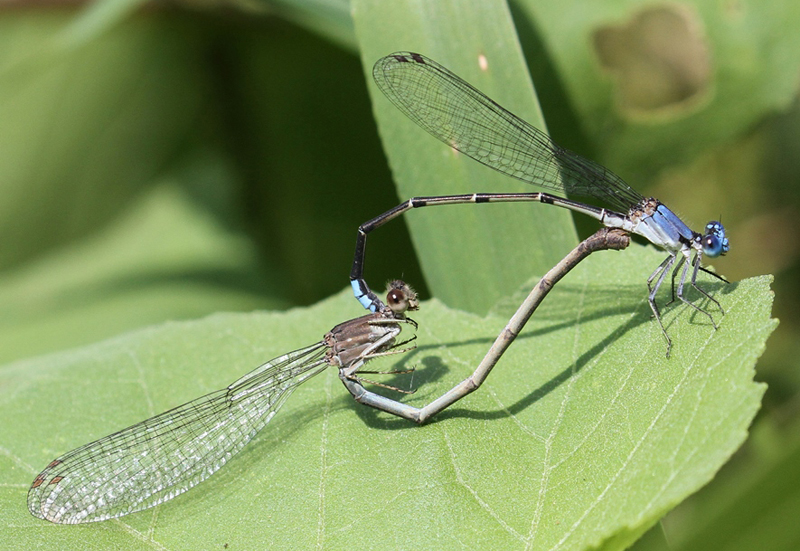




Coenagrionidae, Pond Damsel Family
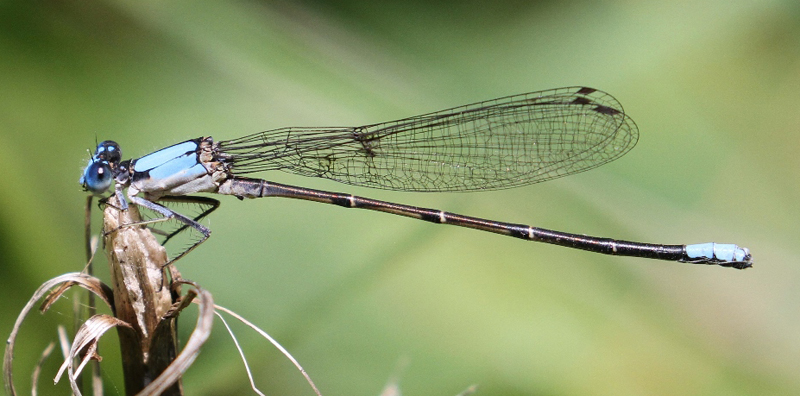
The dancers (Argia species) are sometimes similar in appearance to the bluets (Enallagma species) and may require in-hand examinations to separate them. Dancers can always be identified by the long setae on the front of their tibiae, which are twice as long as the intervening spaces. In all other pond damsels, these setae are only about as long as the intervening spaces. The females generally are duller than males and more difficult to identify. The "bouncy" flight of the dancers also distinguishes them from the bluets.
Status-Global/State:
Distinguishing Characteristics:
The length of the body varies from 1.3 to 1.6 inches. The male has a bright blue face and thorax. The abdomen is black with pale blue rings on the joints with a mostly blue tip. The eyes are dark blue with tiny blue eyespots. The female occurs in blue and brown forms. The brown form is a brown version of the male. The blue form is similar to the male's coloration. The blue form of powdered dancer does not have bright blue at the end of the abdomen. The brown form of powdered dancer has less black on the abdomen than the brown form of the blue-fronted dancer female. A key to separating female blue-fronted and powdered dancers is the number of cells below the stigma in the wing. As shown in the wing detail photo, female blue-fronted dancers only have a single cell below the stigma where a powdered dancer has two.
Description of Habitat/Range:
Ranging from central to eastern United States, the blue-fronted dancer likes broad muddy rivers, occasionally lakes and ponds. It is found at widely scattered sites, mostly in southern Wisconsin.
Flight Season:
In Wisconsin, it has been documented from mid-June to early September. Rangewide, the flight season is from late May to late August.
(Click on photos to enlarge)
